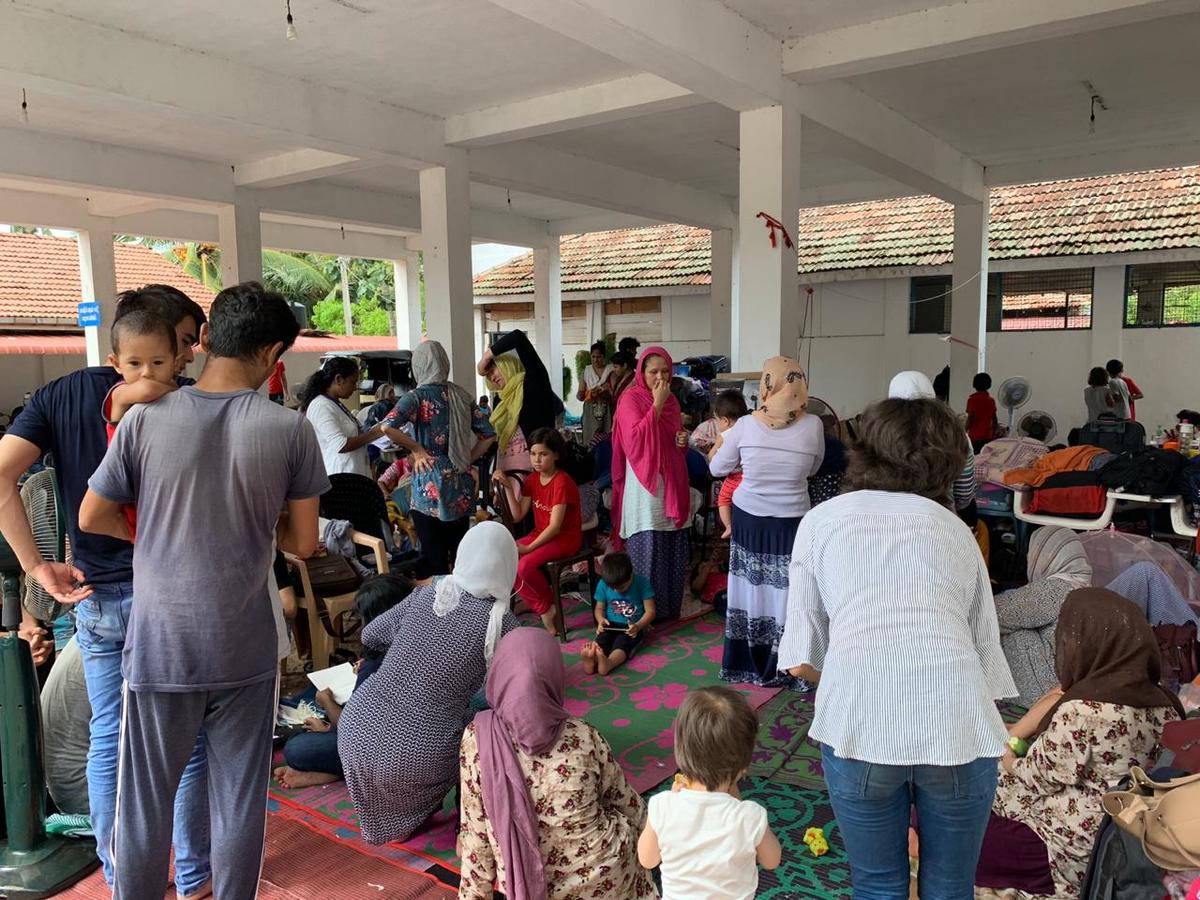Fighting makes it difficult for Sri Lankans to find safety and for UNHCR to deliver aid
Fighting makes it difficult for Sri Lankans to find safety and for UNHCR to deliver aid

GENEVA, August 15 (UNHCR) - Continued heavy fighting in the north and east of Sri Lanka has sent several thousand more civilians fleeing their homes in search of safety in the last few days.
However, UN refugee agency spokeswoman Jennifer Pagonis told journalists in Geneva on Tuesday that freedom of movement is heavily restricted in many areas, making it difficult both for civilians to move and for UNHCR to deliver much-needed aid to them.
"For the last few days, because of strict local curfews, civilians in the northern Jaffna district have not been able to travel long distances to safer areas, but have been moving a short distance away from the coast to avoid the worst of the fighting," she said. "Thousands of families are still trapped on the islands off Jaffna peninsula and are unable to move freely now."
The Jaffna peninsula has become the centre of Sri Lanka's conflict, with the government armed forces and rebel Liberation Tigers of Tamil Eelam (LTTE) exchanging artillery fire along their de facto border.
UNHCR, together with other UN agencies, is preparing an assessment mission to Jaffna to see exactly what people's needs are, Pagonis said, adding: "Our offices are ready to distribute emergency packs, additional water jerry cans, water bladders and lanterns if required."
Many of the people who could get out of Jaffna district have begun making their way south to the LTTE-controlled Killinochchi district, where the displaced are being assisted in schools and other communal centres.
While air strikes in Batticaloa district have hindered access to many affected areas, UNHCR and its partners have worked closely with the military and local authorities to secure safe passage to the LTTE-controlled area of Vaharai.
"This much-needed positive development allowed agencies last Friday to deliver truckloads of food and medicine to civilians affected by the fighting," Pagonis said. The next day, further food and water supplies were permitted into the area, as well as tarpaulins, sanitary napkins and jerry cans provided by UNHCR.
Access to Muttur and Eachchilampattai in Trincomalee district is still blocked, and Pagonis said UNHCR and its partners are "deeply concerned" about the well-being of those still trapped in these areas, estimated to number around 15,000.
Meanwhile, resources in Kantale - a small town to the south of Trincomalee which has received many of the district's 50,000-plus displaced people - are coming under enormous strain. Local authorities are searching for new sites to accommodate the newly displaced and decongest the crowded communal shelters, where fears for health and sanitation remain high.
The recent flare-up comes despite a 2002 ceasefire agreement which officially still remains in place. That document aimed to end almost two decades of war between the government and the rebels, who seek an independent homeland for the country's minority Tamil people in the north and east.
Since the ceasefire agreement began unravelling in April, UNHCR has recorded 128,850 people newly displaced within the country, including more than 50,000 who fled since the flare-up of violence in Muttur and its surrounding areas in Trincomalee district on August 3. A further 6,672 Sri Lankans have become refugees in Tamil Nadu in India since the beginning of the year.





